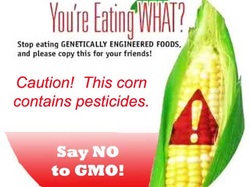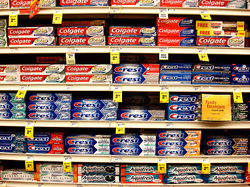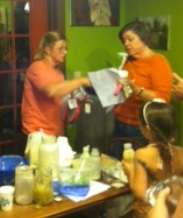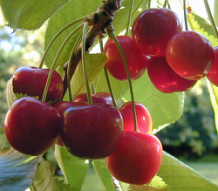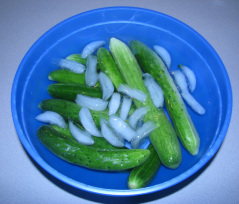
It's best not to use very large over grown cucumbers as these cucumbers tend to lose their crispness easier than smaller cucumbers. You will see that I have these cucumbers soaking in filtered water with ice cubes. If your cucumbers are not straight from the garden, they can become a little limp so to freshen them up just wash them and soak them in filtered cold water for about two hours. If part of the vine end is still attached just cut it off a little more so that the water will be better absorbed by the cucumber.
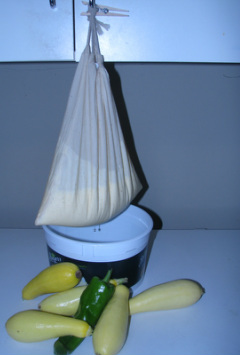
In the picture you see that I have a bag called a yogurt cheese bag that has a drawstring and I have it clothespinned to the handle on my cabinet. You can use fine weave cheesecloth instead of the bag if you prefer. In the bag I have placed my milk kefir (yogurt or buttermilk) and you can see that I have actually captured a drip at the bottom of the bag going into the bucket (no metal bucket -use glass or safe plastic). This drip is whey that is separating out from the milk solids. You can let it drip for a short time for a little thicker kefir or you can let it drip overnight when all the whey will be removed and you will have a kefir that is the consistency of cream cheese. However it doesn't take long at all to get enough whey for your cucumber ferment and you can just scoop some out when you are ready to use it in the process. By the way the squash and pepper have nothing to do with this. I just placed them for eye appeal and had just gathered them from the garden. See other ways to extract whey.
If you want to skip using whey altogether for your cucumber ferment then see my instructions below for using salt only.
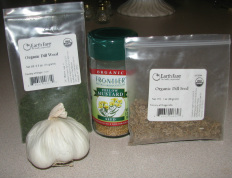
1 grape leaf, oak leaf or 1/4 tsp. black tea leaves
1 tablespoon mustard seeds
2 tablespoons fresh dill or 1 teaspoon dried dill and 1 teaspoon dill seeds
2 cloves garlic (may omit)
dash of red pepper flakes (may omit)
1/4 cup whey
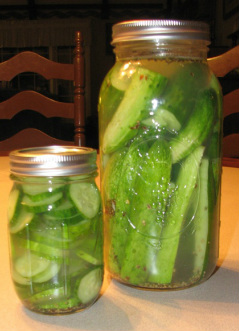
After three days remove the airlock lid and place a regular lid on the jar and store in the refrigerator. Taste improves with time and the pickles should last six months.
You can see in my picture that I have one half gallon jar of whole and speared cucumbers and one pint of sliced cucumbers.
How do you know if your ferment went bad and did not ferment correctly? No amount of money could get you to eat one if that happens so your nose will know. A big reason for a bad ferment is using non viable whey and chlorinated water.
Now it's your turn. Give it a try and enjoy!
Interesting facts: These pickles go well with meats since they are able to dissolve precipitates of uric acid and thus prevents the formation of stones, often caused by meats and sausages, foods rich in uric acid. Claude Aubert Les Aliments Fermentes Traditionnels
A 1999 study published in the Lancet found that consumption of lacto-fermented vegetables was positively associated with low rates of asthma, skin problems and autoimmune disorders in Swedish children attending a Waldorf school. The same study found that use of raw milk and avoidance of vaccinations added to the protective effects. SWF (from page 97 of Nourishing Traditions)

